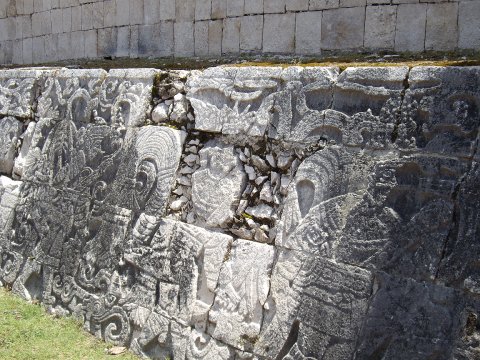 Chichen Itza was one of the largest Maya cities, with
the relatively densely clustered architecture of the site core covering
an area of at least 5 square kilometres. It was a major focal point in
the Northern Maya Lowlands from AD 600–900. The site exhibits a multitude
of architectural styles. The city may have had the most diverse population
in the Maya world. The ruins of Chichen Itza are federal property is one
of the most visited archaeological sites in Mexico; an estimated 1.4 million
tourists visit the ruins every year.
Chichen Itza was one of the largest Maya cities, with
the relatively densely clustered architecture of the site core covering
an area of at least 5 square kilometres. It was a major focal point in
the Northern Maya Lowlands from AD 600–900. The site exhibits a multitude
of architectural styles. The city may have had the most diverse population
in the Maya world. The ruins of Chichen Itza are federal property is one
of the most visited archaeological sites in Mexico; an estimated 1.4 million
tourists visit the ruins every year.
Dominating the site is the Temple of Kukulkan (a Maya
feathered serpent deity), usually referred to as El Castillo ("the castle").
This step pyramid stands about 30 metres high and consists of a series
of nine square terraces, each approximately 2.57 metres high, with a 6-metre
high temple upon the summit.
The sides of the pyramid are approximately 55.3 metres
at the base and rise at an angle of 53°, although that varies slightly
for each side. The four faces of the pyramid have protruding stairways
that rise at an angle of 45°. The talud walls of each terrace slant
at an angle of between 72° and 74°. At the base of the balustrades
of the northeastern staircase are carved heads of a serpent.
During the spring and fall equinoxes, this pyramid
serves as a visual symbol of the day and night. On every equinox, the sun
of the late afternoon creates the illusion of a snake creeping slowly down
the northern staircase. Symbolically, the feathered serpent joins the heavens,
earth and the underworld.
Mesoamerican cultures periodically superimposed larger
structures over older ones. The in the mid-'30s Mexican government authorized
excavation and discovered a staircase under the north side of the pyramid.
By digging from the top, they found another temple buried below the current
one. Inside the temple chamber was a Chac Mool statue and a throne in the
shape of Jaguar, painted red and with spots made of inlaid jade. They excavated
a tunnel from the base of the north staircase, up the earlier pyramid’s
stairway to the hidden temple.
Archaeologists have identified thirteen ballcourts.
The Great Ball Court, measuring 168 by 70 metres about 150 metres is the
largest and best preserved ball court in ancient Mesoamerica. The parallel
platforms flanking the main playing area are each 95 metres long. The walls
of these platforms stand 8 metres high. Set high up in the centre of each
of these walls are rings carved with intertwined feathered serpents. At
the base of the high interior walls are slanted benches with sculpted panels
of teams of ball players. In one panel, one of the players has been decapitated;
the wound emits streams of blood in the form of wriggling snakes.
The Yucatán Peninsula is a limestone plain,
with no rivers or streams. The region is pockmarked with natural sinkholes,
called cenotes. There are two large, natural sink holes, called cenotes,
that could have provided plentiful water year round at Chichen, making
it attractive for settlement. Of the two cenotes, the Sacred Cenote --
the Well of Sacrifice -- is the most famous. The pre-Columbian Maya sacrificed
objects and human beings into the cenote as a form of worship to the Maya
rain god Chaac. Dredging of the well has recovered artifacts of
gold, jade, pottery and incense, as well as human remains -- their wounds
being consistent with human sacrifice.
ADDED REFERENCE:
Large
Chichen Itza Photos Identified




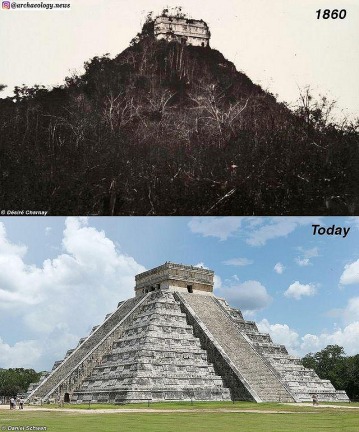
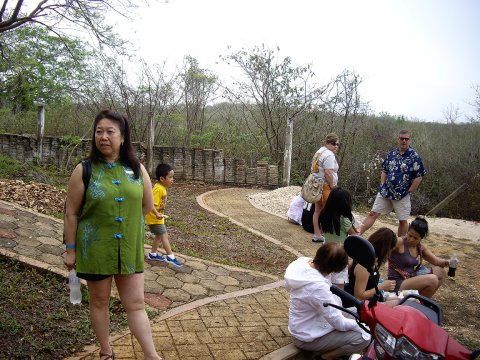 .
.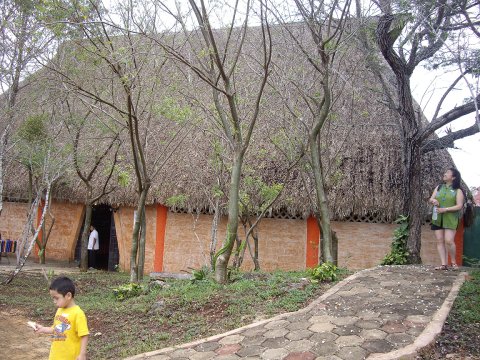
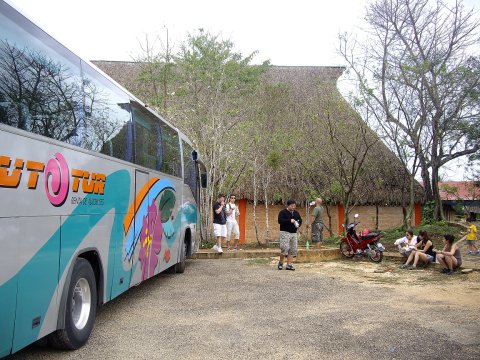 .
.
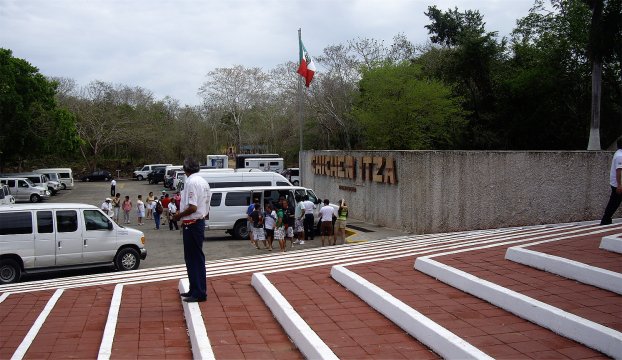 .
.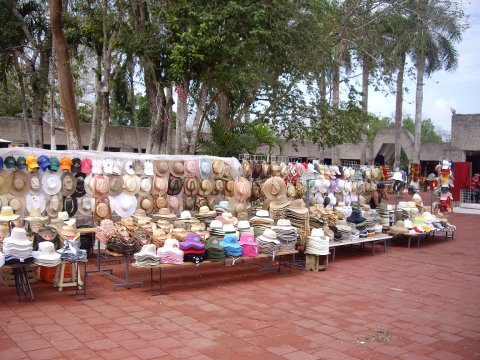
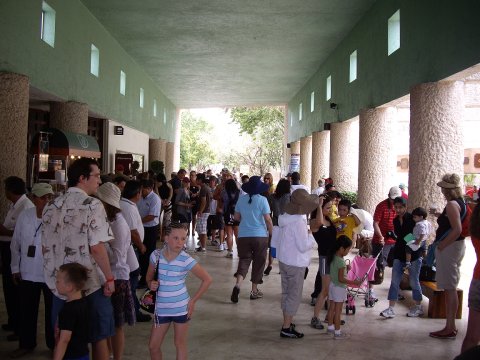 .
.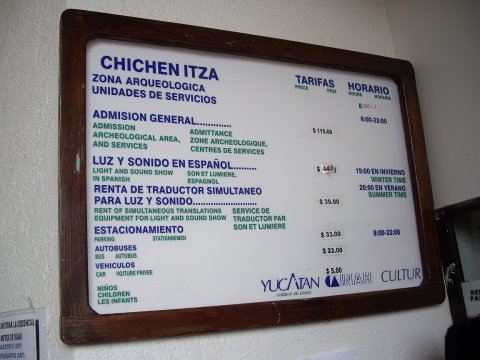
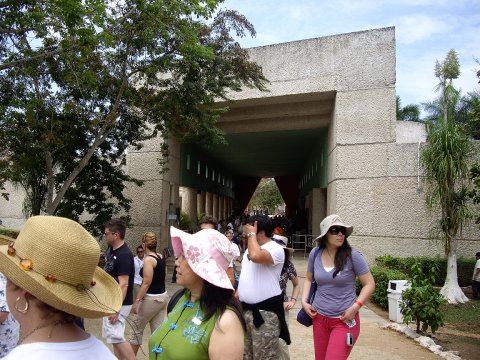 .
.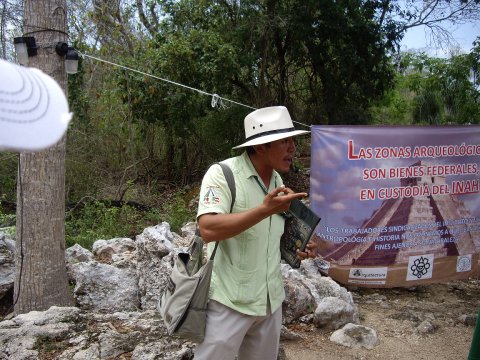
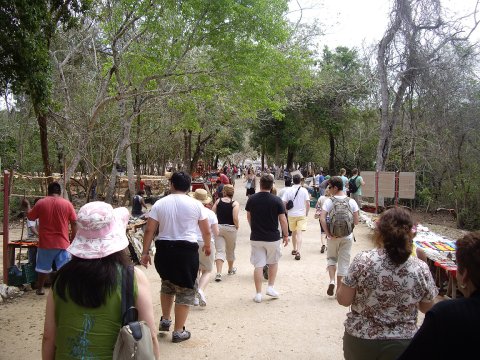 .
.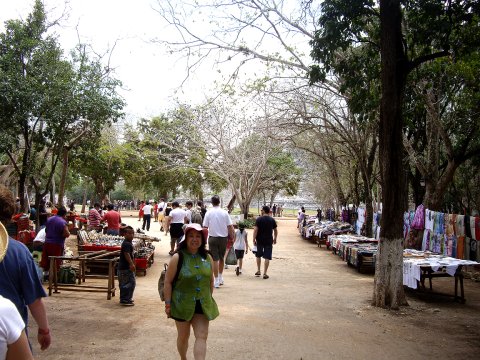
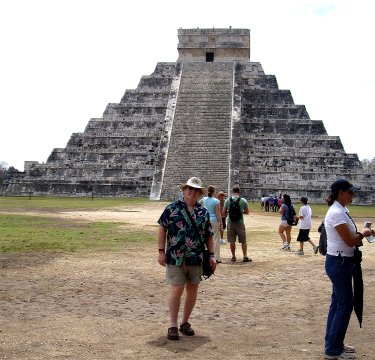 .
.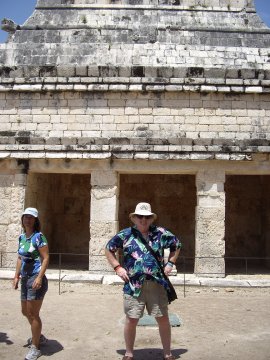
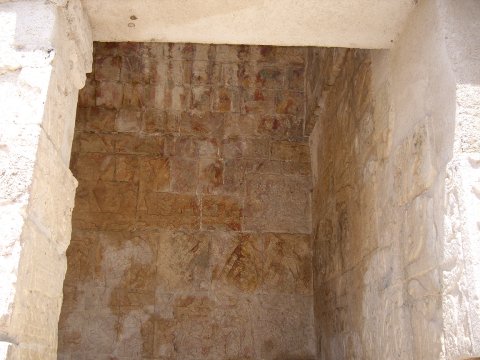 .
.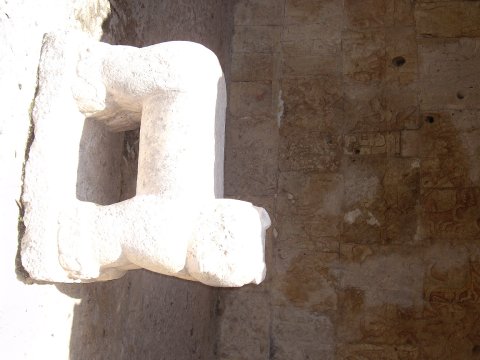
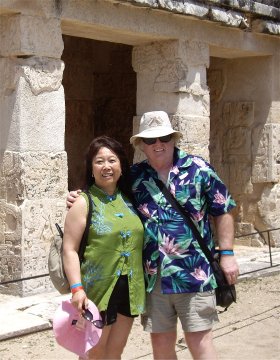 .
.
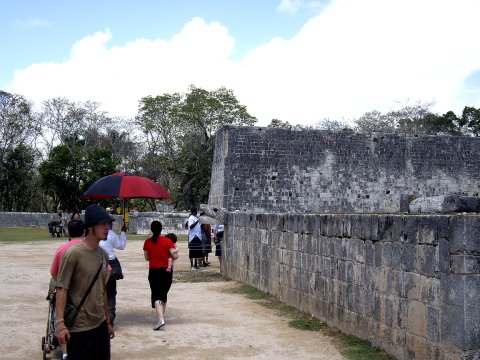 .
.
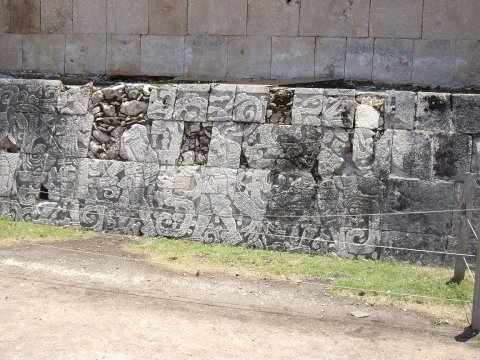 .
.
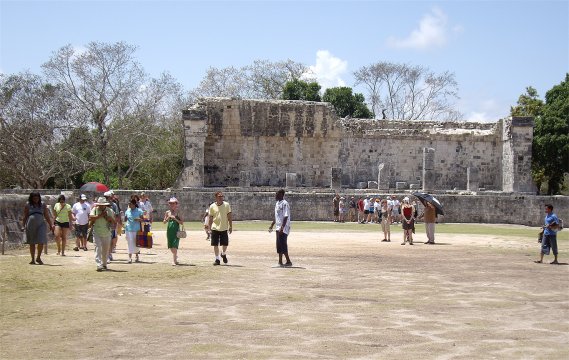 .
.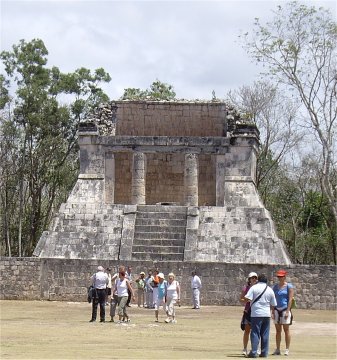

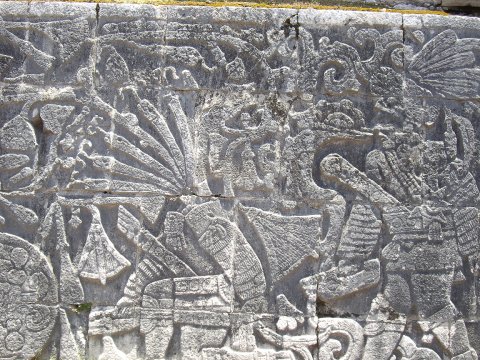 .
.